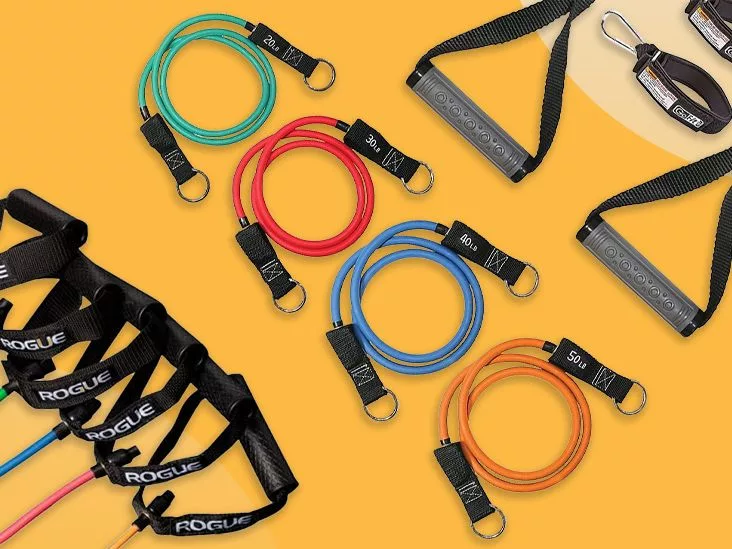Ever wondered why a simple rubber band can feel like a magic wand for seniors? It’s because resistance bands blend strength, flexibility, and portability into one affordable package. Whether you’re fresh to exercise or looking to add a low‑impact twist to your routine, the right band can keep you moving, feeling confident, and independent.
Below you’ll discover why bands are a senior‑friendly powerhouse, how to pick the perfect set, the four best options on the market, safety basics, and a couple of easy‑to‑follow workouts you can start today. Grab a cup of tea, settle in, and let’s make strength training as comfortable as a good conversation with a friend.
Why Bands Work
Strength training isn’t just for bodybuilders; it’s a cornerstone of healthy aging. The National Institutes of Health (NIH) notes that regular resistance work helps preserve muscle mass, bone density, and functional independence in older adults. What makes bands especially attractive is their low‑impact nature—no heavy weights, no intimidating machines, just a stretch that’s gentle on joints.
Here are a few reasons seniors love them:
- Portable and lightweight: Slip them in a drawer or take them on a trip.
- Versatile: Use them seated, standing, or even lying down.
- Scalable resistance: Choose light bands for warm‑ups or heavier ones for progressive strength.
- Cost‑effective: Most sets cost less than a single dumbbell pair.
But, like any tool, they have downsides. Bands can snap if over‑stretched, and a poor grip might lead to hand strain. Understanding both the perks and the risks will help you use them safely and enjoyably.
Choosing the Right Band
Picking a band isn’t rocket science, but a few details can make a big difference.
Resistance Levels
Most brands label bands as light, medium, heavy, or by the amount of force (e.g., 5‑10 lb). For beginners, start with a band that offers about 5‑10 lb of resistance—enough to feel a challenge without over‑exerting. As you gain confidence, you can progress to heavier bands.
Material Matters
Latex offers excellent elasticity, but some people have allergies. If that’s a concern, look for latex‑free options like TPE or fabric‑covered bands.
Handles & Accessories
Gripping a flat band can be tricky for seniors with arthritis. Bands that come with ergonomic handles, ankle straps, or a door anchor provide extra stability and comfort. According to a senior‑fitness specialist, “handles dramatically reduce hand fatigue and keep the focus on the muscles being worked.”
Price & Value
Affordable doesn’t have to mean cheap. A good set typically includes multiple resistance levels, a carrying case, and a quick‑start guide for under $30. Think of it as an investment in your long‑term mobility.
Top Four Picks
After testing dozens of options and reviewing expert opinions, these four bands emerged as the most senior‑friendly.
| Rank | Brand & Model | Resistance Range | Key Features | Approx. Price |
|---|---|---|---|---|
| 1 | Titan Fitness Light Resistance Bands | 5‑35 lb (5 levels) | Soft handles, durable latex, carry case | $28 |
| 2 | REP Fitness Tube Bands with Handles | 5‑40 lb (6 levels) | Included door anchor, foam‑grip handles | $25 |
| 3 | Living Fit Full‑Body Kit | 2‑50 lb (mix of loops & flat bands) | Instruction manual, ankle straps, extra‑wide loops | $32 |
| 4 | Fringe Sport Latex‑Free Bands | 4‑30 lb (5 levels) | Hypoallergenic, reinforced stitching, textured handles | $30 |
Why These Four?
Titan Fitness Light Bands top the list for their balance of grip comfort, clear resistance markings, and an affordable price. Healthline mentions them as “relatively affordable equipment that’s easier to use than most exercise equipment.”
REP Fitness Tube Bands earn the “Best Budget” badge because they pair sturdy handles with a full door‑anchor system, letting seniors perform standing rows, chest presses, and squats safely at home.
Living Fit Full‑Body Kit is perfect for those who like a variety of exercises—from leg curls with loop bands to shoulder presses with tubes—plus a printed guide that walks you through each movement.
Fringe Sport Latex‑Free Bands are the go‑to for anyone with skin sensitivities. Their fabric coating prevents slipping and makes them gentle on the hands.
Safety First Tips
Even though bands are low‑impact, a few safety habits will keep your workouts pleasant.
Warm‑Up Properly
Spend 5‑7 minutes doing gentle arm circles, ankle rolls, and marching in place. A warm‑up increases blood flow and preps muscles for the stretch.
Check for Wear
Before each session, inspect the band for cracks, thinning, or fraying. If you spot any damage, replace it—band failure can cause sudden strain.
Secure Anchors
If you’re using a door anchor, make sure the door is closed, the anchor is positioned in the top third of the door, and the door is firmly latched. This prevents the anchor from slipping mid‑exercise.
Mind Your Grip
For seniors with arthritis, wrap the handles with a thin towel or use the band’s built‑in textured grip. This reduces pressure on the fingertips and wrists.
Progress Gradually
Start with 1–2 sets of 8–10 repetitions per exercise. As the movements feel easier, add another set or move to a slightly heavier band. The goal is consistent progress, not sudden overload.
Starter Workouts
Below are two friendly routines—one seated, one standing—that you can slot into a weekly schedule. Aim for two sessions per week, as recommended by the American Heart Association for older adults.
Seated Upper‑Body Circuit (5 minutes)
- Chest Press – Loop the band behind your back, hold the ends, and push forward as if you’re hugging a tree. 10 reps.
- Seated Row – Anchor the band under your feet, pull the handles toward your torso, squeezing shoulder blades. 10 reps.
- Bicep Curl – Stand (or stay seated) with the band under your feet, curl the handles up, keeping elbows close to the body. 10 reps.
Rest 30 seconds between each exercise and repeat the circuit once more if you feel up to it.
Standing Full‑Body Flow (10 minutes)
- Squat to Press – Step on a medium band, hold handles at shoulder height, squat, then rise and press overhead. 12 reps.
- Lateral Band Walk – Place a loop band around your thighs, lower into a half‑squat, and step sideways for 8 steps each direction.
- Standing Hip Thrust – Loop the band over your hips, anchor behind you, and push your hips forward, squeezing glutes. 12 reps.
- Triceps Extension – Anchor the band overhead, hold the handle, and lower your forearm behind you, then extend. 10 reps each arm.
Finish with a gentle stretch—reach overhead, roll your shoulders, and flex your calves. This routine targets every major muscle group while keeping joint stress low.
Where to Buy
When ordering online, check for reputable sellers with clear return policies. Amazon often lists user photos and verified reviews that can give you a sense of durability. Look for a warranty of at least six months—most quality brands stand behind their products.
If you prefer to shop in‑store, many pharmacy chains and senior‑focused fitness stores carry the top picks. A quick call ahead can save you a trip.
Wrapping Up
Resistance bands are a tiny piece of equipment with a huge payoff for seniors. They’re portable, affordable, and adaptable—perfect for anyone who wants to stay strong without the hassle of heavy weights. By choosing a band set that matches your comfort level, checking it regularly for wear, and following our starter routines, you’ll be on your way to healthier muscles, better balance, and greater confidence in everyday tasks.
Ready to give them a try? Pick a band that feels good in your hand, set a reminder for two short sessions this week, and notice how even a few minutes of stretch‑and‑pull can brighten your day. Have you already discovered a favorite band or exercise? Drop a comment below—we’d love to hear your story and help each other stay active!


















Leave a Reply
You must be logged in to post a comment.